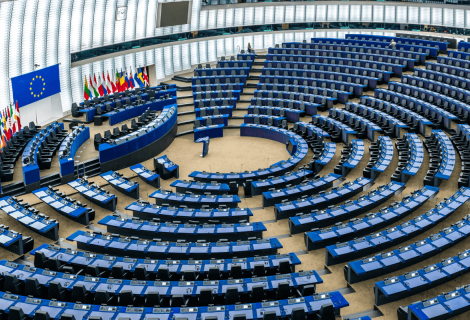
More Money, Less Vision: Global Europe Risks Turning Partnerships into Political Transactions
The Commission’s new Global Europe Instrument claims to adapt EU external action to today’s and tomorrow’s challenges. Yet, as it stands, the proposal prioritizes flexibility over clarity, self-interest over partnership, and financial tools over development impact. In an increasingly contested global environment, this approach risks undermining the EU’s credibility and reinforcing perceptions of asymmetry in its partnerships while claiming moral credit.
Global Europe is, in fact, an opportunity to articulate a coherent vision for EU external action. To succeed, the EU must clearly distinguish development, economic diplomacy, and security objectives. Shared global priorities—such as poverty reduction and climate resilience—should remain at the core to ensure partnerships that are credible, balanced, and sustainable.
This blog offers an initial analysis of the Global Europe Instrument proposed yesterday by the Commission. It provides preliminary reflections, which will be developed further in upcoming posts.
The Big Number: Good News or Illusion?
The Commission’s proposal of €200 billion for the Global Europe Instrument appears ambitious—a 40% increase for external action, sending a strong signal about the EU’s global ambitions. While 90% of the proposed budget qualifies as ODA (slightly down from 93% under NDICI), the share of external action within the overall MFF remains unchanged at 10%.
However, this new Instrument is fundamentally different from its predecessor. Unlike NDICI’s clear (legal) focus on development, the Global Europe Instrument brings together a wide range of objectives—competitiveness, security, crisis response—under a single financial toolbox. This risks diluting resources across multiple and loosely defined priorities.
Geographically, the Neighbourhood, particularly the Southern Neighbourhood, sees its share almost double. Sub-Saharan Africa, however, appears to lose in relative terms. Meanwhile, the Global Affairs pillar maintains its percentage but now covers broader areas, stretching resources even further away from core development needs such as human development and climate action.
The Big Shift: From Development to Ambiguity
The assumption that the EU’s external budget would no longer be primarily about development is now confirmed. Global Europe moves beyond the legal framework of Article 208 TFEU.
While policy coherence across areas like migration, energy, and trade has long been an EU objective, recent years have seen development policy systematically instrumentalized for non-development purposes, eroding trust among partners.
At least, the proposal acknowledges this reality by no longer labelling everything as development: the text openly reflects broader objectives, while development is pushed into the background. Commitments such as poverty eradication and human development barely feature, overshadowed by references to migration, competitiveness, security, investment, and Ukraine.
Furthermore, Recital 24 seems to subject the Instrument and the Global Gateway to the EU’s yet-to-be-defined “economic foreign policy.” This ambiguity is problematic: the Instrument is neither a fully articulated foreign (economic) policy framework nor a development one per se. Instead, it risks becoming a highly politicized financial toolbox for transactional deals with “strategic partners.” In a contested world, this will expose partners to EU political volatility, entrenched asymmetries, and disproportionate privileges—deepening imbalance and fuelling mistrust.
The Big Constant: Financialization at the Core
Despite its broader mandate, the Instrument retains NDICI’s financial DNA. EFSD+, now branded as a “financial toolbox,” remains central—applicable across the entire Instrument. Strikingly, the same financial tools designed for development are now expected to deliver a far wider set of foreign policy objectives, underscoring that these mechanisms were never purely about development. It also reinforces the impression that donor dominated OECD rules are becoming increasingly permissive.
The integrated financial package—grants, guarantees, blending, and financial instruments—privileges financialization over proven development modalities. The External Guarantee doubles, without maximum amount for provisioning defined yet, even as evaluations highlight its limited impact in fragile contexts and on core needs such as health and education, as well as its low operationalization rate. Meanwhile, safeguards like earmarked targets for human development and gender equality are absent.
The proposal also introduces direct awards to private entities for projects of ‘strategic interest’ to the EU—such as feasibility studies for raw materials or digital infrastructure—symbolizing the high level of discretionary power granted to the Commission and the Instrument’s shift towards EU-driven priorities. Policy-based loans modelled on budget support add further debt risks for partner countries, already burdened by high debt levels.
Ways Forward
Define a coherent and balanced vision for partnerships
External action cannot be a patchwork of competing priorities. The EU must clearly distinguish between economic diplomacy, security, and development, and link each to specific policy framework, financing tools, reporting, and transparency mechanisms. Without a shared strategic vision—where development remains central as the core needs of most of its partners—this loose framework will lead to fragmented and opportunistic interventions lacking political coherence and impact.
Recentre development commitments
Development may no longer be the sole focus, but Article 208 TFEU still applies. Poverty reduction, human development, gender equality and climate resilience must feature prominently—with measurable targets, safeguards, and performance frameworks. Without this, the EU’s credibility as a trusted development partner will continue to erode.
Align financial tools with objectives
Evidence is clear: guarantees and blended finance do not deliver in fragile contexts or on core development and climate resilience goals. Direct grants and budget support remain more effective. Funding tools must match policy objectives—not financial convenience.